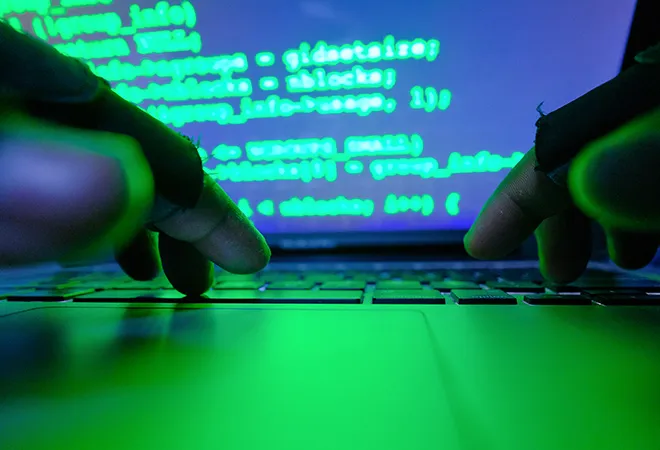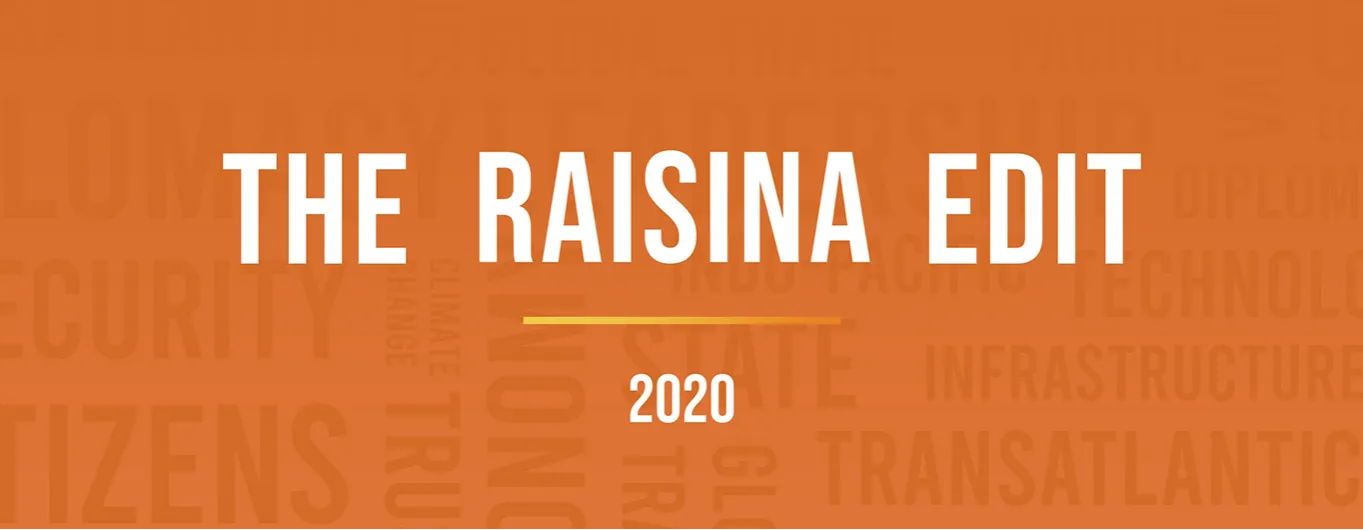
Extremists have repeatedly proven to be early adopters and adapters of technology since the 1990s when the internet flickered to life in the public domain. But as governments seek to counter terrorism online and by other technological means, it is worth remembering that tech is simply a tool: one that is open to use, misuse, and abuse by all who wield it on both sides of the law.
In the first phase of internet presence, extremist groups focused on conveying their cause and forming a community of support that transcended geographical borders. The white supremacist website, Stormfront, was the internet’s first major — albeit rudimentary — hate site.
<1> It functioned as an online forum attracting tens of thousands of supporters from across the world and was the millennial precursor to more recent interactive platforms like Gab. Although its cause was different, The Liberation Tigers of Tamil Eelam in Sri Lanka used the internet similarly to connect and communicate with a wider audience, primarily to solicit moral and financial support from the Tamil diaspora abroad.
As use of the internet slowly matured, groups began incorporating multimedia streaming and even games for children on their websites. In Southeast Asia, the Philippines’ New People’s Army capitalised on multimedia platforms by posting YouTube videos promoting their cause. Islamist groups in Indonesia, such as the Islamic Defenders Front, leveraged online donations as well as internet radio broadcasts available on mobile platforms across multiple operating systems. Some websites, such as the now shuttered Arrahmah.com, projected a professional image for credibility, complete with ad spaces for sale as well as a listing of the team’s chief technology officer and corporate lawyers.
The second phase began with the emergence of social media. Many extremist groups began establishing a presence on platforms such as Twitter and Facebook. Some groups opened multiple accounts on a single platform. Arrahmah.com, for example, maintained Facebook accounts in Bahasa Indonesia, Arabic, and English to reach audiences in Southeast Asia, the Middle East, and beyond. The site’s team also administered separate pages for media announcements on the one hand, and youth engagement on the other. Of course, al-Qaeda’s carefully scripted and timed media campaign after the attacks of September 11, 2001 eclipsed all nascent attempts by others in scale and impact. More than a decade later, al-Qaeda’s media and internet strategy was itself surpassed by the gruesome production capabilities of Daesh.
Propaganda, recruitment, and communication aside, it is also well-documented that terrorists have used the internet for the more functional purposes of organising, coordinating, and collaborating on attacks.
<2> In the early to mid-2000s, terrorists were able to side-step email surveillance by opening and sharing numerous accounts, and then communicating through messages left unsent in the “Draft” folder. These messages would then be deleted once read. Presently, end-to-end encrypted messages and chat channels compound law enforcement challenges in scale and speed.
As Daesh brutally highlighted, terrorism is ultimately the spectacle of ideology through violence.
Additionally, police officers must now contend with new and commercially available technologies employed in terrorist attacks. The attacker of a German synagogue on Yom Kippur early October 2019 used 3D-printed components of the home-made weapons he cobbled together.
<3> Although these components were not essential to the weapons, the incident nevertheless underscored the fact that the future is nearly here. In 2017, Daesh reportedly began using weaponised drones in Iraq and announced the establishment of an “Unmanned Aircraft of the Mujahideen” unit.
<4> As production of these gadgets increases and costs become cheaper, individual terrorists and groups will find greater appeal and utility in these innovations. Knives and trucks may still be easier and cheaper options but novel attack methods will no doubt be a draw to some.
As Daesh brutally highlighted, terrorism is ultimately the spectacle of ideology through violence. The perpetrators of violent extremist acts may (ab)use technology to propagate, organise, and facilitate attacks. But in order for terrorism to be effective — that is, for fear to be widespread, for latent communal divisions to be exacerbated, and for change to be instituted by way of policy or societal behaviour — terrorist attacks have to be staged. So long as technology is able to visually capture, broadcast, and amplify the dramatics of terrorism, terrorists will continue to exploit technology for these very purposes. The terrorist who gunned down 51 mosque-goers in Christchurch, New Zealand in 2019 in a Facebook livestream feed with a camera mounted to his head was preceded in 1972 by the Black September group that killed 11 athletes and a law enforcement officer at the Munich Olympics in a live television broadcast to the world.
The Christchurch Call, convened by New Zealand Prime Minister Jacinda Ardern and French President Emmanuel Macron, just two months after the Christchurch attack is a multistakeholder initiative that voluntarily commits governments and online service providers to work with each other and with civil society, including the academic and research community, to prevent and disrupt the dissemination of terrorist and violent extremist online content.
<5> The Call builds on work already being done by Global Internet Forum to Counter Terrorism, the Global Counterterrorism Forum, Tech Against Terrorism, and the Aqaba Process.
As a collective effort, the Call makes sense given the real and actual harm of violent extremist content as well as the multistakeholder nature of cyberspace. However, the reservation some have expressed over free speech concerns illustrates the challenge of harmonising efforts across jurisdictions to interdict terrorist or violent extremist content. Even though it is now an offence to share video footage of the Christchurch attack in New Zealand (it will be in violation of the country’s proscription of “objectionable material”),
<6> there are differing legal standards elsewhere of what amounts to objectionable.
As such, much of the focus has been on pressuring online service providers to remove or restrict the hosting and distribution of offensive or harmful content through their respective platforms. Technology companies certainly bear a share of responsibility in curbing online incitement, dissemination, and magnification of terrorist propaganda. The sheer volume of posts and videos being shared by the minute on these sites means that online service providers are best placed as front-liners to respond to terrorist or violent extremist content. Indeed, in 2017 Facebook, Microsoft, Twitter, and YouTube established the Global Internet Forum to Counter Terrorism (GIFCT). GIFCT, which has since grown to include nine other technology companies, works collaboratively to disrupt content created and shared by terrorists and violent extremists. However, in recognition of the need for a whole-of-society approach to effectively counter such content, GIFCT announced in December 2019 that it would be restructured as an independent organisation to centre its work with partners across the technology industry, civil society, government, and academia.
<7>
Technology companies certainly bear a share of responsibility in curbing online incitement, dissemination, and magnification of terrorist propaganda.
Technology, therefore, is simply a medium and not all problems found online are to be resolved online. Just as technology companies have been compelled — by regulation and political pressure — to reflect on their role and responsibility in contributing to terrorism or violent extremism, other stakeholders, including political and religious leaders, should also do the same. For every assertion made about terrorists who self-radicalise online, there is a counterpoint to be made about the physical networks missed and real-world triggers dismissed. Many terrorist motivations, confirmed by online narratives as well as by detainee accounts and interviews, point to contentions of structural inequities, injustices, and indignities prevalent in the offline world.
It is worth noting that some of these grievances can and have in fact been aggravated by the use of technology, ostensibly deployed in order to enhance security. This includes the controversial use of drone strikes to eliminate terrorists as well as the growing use of surveillance technology by the state. While the installation of surveillance cameras may be intended to deliver security and resilience benefits to the targeted community, at least one example has shown that it can end up alienating the very population the measure claims to protect.
<8> There are also other insidious instances of systematic state surveillance done in the name of counter-terrorism that increasingly present troubling governance implications for emerging technologies like machine learning and artificial intelligence.
These examples across Asia, the Middle East, Europe, and elsewhere will offer important illustrations of the tipping point between security-by-technology and insecurity-by overreach.
<9>
Given how long extremists have occupied and exploited the digital space, discussion of the technology-terrorism nexus will only continue to grow. However, it is important that the nature of these deliberations matures beyond knee-jerk reactions so that long-term policies and strategies towards terrorism and technology can be crafted comprehensively. Technology has as much potential to exacerbate as it does to mitigate the risks of terrorism. What takes place in the digital space is merely symptomatic of structural and governance challenges in the physical space. At the end of the day, terrorism would not be terrorism without a political motivation. It follows that the apposite response to terrorism lies first and foremost in the politics of governance rather than in the medium of technology.
<1> “
Stormfront”, Southern Poverty Law Center.
<2> United Nations Office of Drugs and Crime in collaboration with United Nations Counter-Terrorism Implementation Task Force,
The Use of the Internet for Terrorist Purposes (Vienna: United Nations, September 2012).
<3> Beau Jackson, “
Interview with the ICSR: A 3D printed gun was not used in the Halle terror attack”, 3D Printing Industry, October 18,2019.
<4> Joby Warrick, “
Use of weaponized drones by ISIS spurs terrorism fears”,
The Washington Post, February 17, 2017.
<5> More information on the Christchurch Call is available on its website maintained by the Ministry of Foreign Affairs and Trade, New Zealand.
<6> For an explanation of what constitutes “objectional material” under the laws of New Zealand, see “
Objectionable and restricted material”, Department of Internal Affairs, New Zealand Government.
<7> Monica Bickert and Erin Saltman, “
Our work continues”, Global Internet Forum to Counter Terrorism, December 20, 2019.
<8> Jon Coaffee and Peter Fussey, “Constructing resilience through security and surveillance: The politics, practices, and tensions of security-driven resilience,”
Security Dialogue 46(1), 86-105.
<9> See, e.g. Isobel Cockerell, “
Inside China’s Massive Surveillance Operation”, Wired, May 9, 2019 and Christopher Bing and Joel Schectman, “
Project Raven: Inside the UAE’s secret hacking team of American mercenaries”, Reuters, January 30, 2019.
The views expressed above belong to the author(s). ORF research and analyses now available on Telegram! Click here to access our curated content — blogs, longforms and interviews.



 Extremists have repeatedly proven to be early adopters and adapters of technology since the 1990s when the internet flickered to life in the public domain. But as governments seek to counter terrorism online and by other technological means, it is worth remembering that tech is simply a tool: one that is open to use, misuse, and abuse by all who wield it on both sides of the law.
In the first phase of internet presence, extremist groups focused on conveying their cause and forming a community of support that transcended geographical borders. The white supremacist website, Stormfront, was the internet’s first major — albeit rudimentary — hate site.
Extremists have repeatedly proven to be early adopters and adapters of technology since the 1990s when the internet flickered to life in the public domain. But as governments seek to counter terrorism online and by other technological means, it is worth remembering that tech is simply a tool: one that is open to use, misuse, and abuse by all who wield it on both sides of the law.
In the first phase of internet presence, extremist groups focused on conveying their cause and forming a community of support that transcended geographical borders. The white supremacist website, Stormfront, was the internet’s first major — albeit rudimentary — hate site.  PREV
PREV


